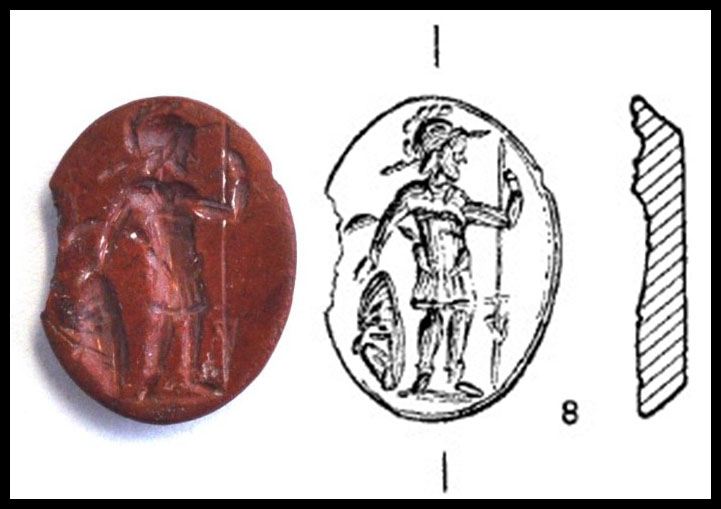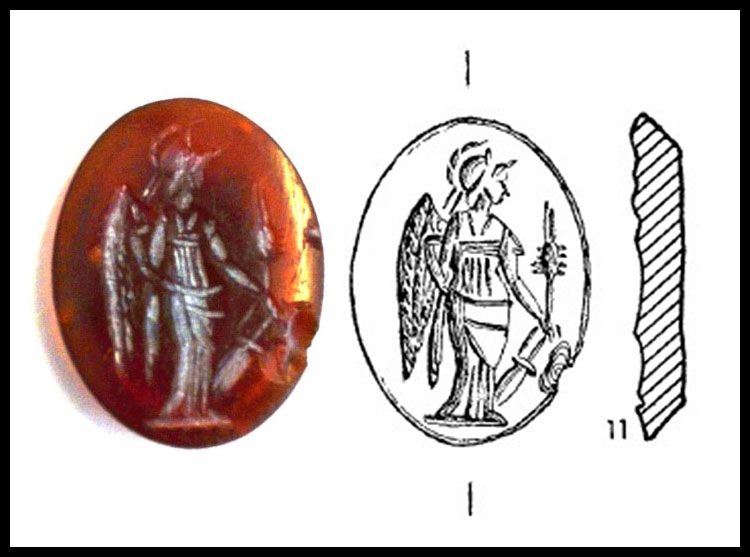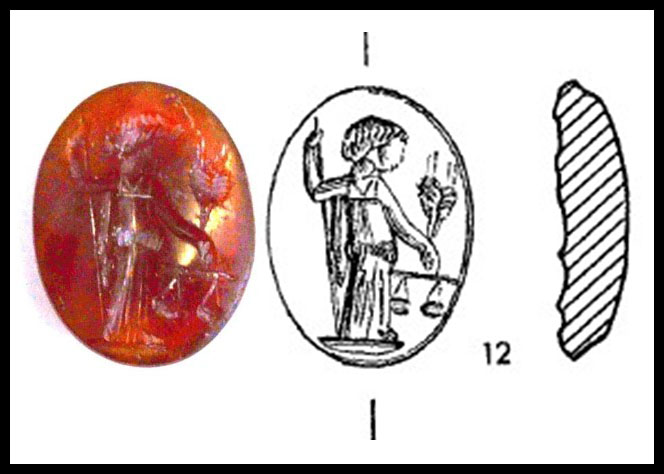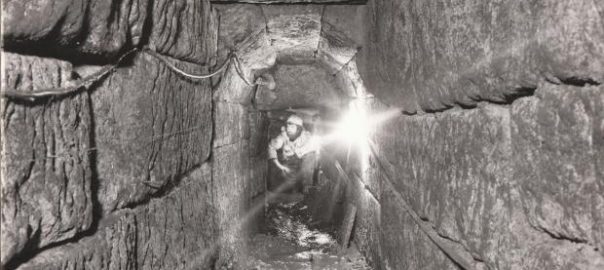I recently vacationed at the City of York, which is located about 200 miles north of London in the UK. While there I visited the Yorkshire Museum and found an exhibit of some intaglios with an interesting history – they were found in a sewer! The exhibit includes 7 intaglios.
The narrative accompanying the stones states, “Sewer Survival – The contents of Eboracum’s (present day city of York) sewers provide crucial evidence about daily life. Objects lost in the baths suggest board games were commonly played and expensive jewellery was worn during bathing…”
The intaglios were found, together with a treasure trove of other artifacts, in 1972 during construction of a section of new shops and offices in York. The sewer that was discovered was almost 4 feet high by about 1 ½ foot wide, made of Millstone Grit (sandstone) blocks and was almost filled with sediment, some of which were investigated for archaeological information – hence the intaglios. It is estimated that the sewer was built toward the end of the 1st century A.D. and was used until the 4th century A.D.
A 1976 publication of the Museum entitled, “Finds from a Roman Sewer System and an Adjacent Building in Church Street”, by Arthur MacGregor, which is available online, provides detailed information about the 8 intaglios found in the sewer and all of the other artifacts.
Good images of three of the intaglios are presented on the Museum website. They are shown here together with the sketch and a partial description from the publication mentioned above.

“8 Red jasper intaglio, oval with flat surface. The stone is in good condition apart from a chip on the left side. 15 x 12 x 2.5 mm. Alignment 1.
“Mars stands towards the front and faces left. He wears a plumed helmet, cuirass, and tunic. In his right hand he holds a spear, its point towards the ground, and his left hand rests upon an oval shield. …”
Image and data about intaglio found on Museum webpage.

“11 Cornielian, translucent with a few black inclusions, oval and very slightly covex. The ston is in good condition apart from supervicial surface wear and a small chip on the right side. 18 x 14 x 2.25 mm. Alignment 1a (this is location in the sewer system at which the gem was found).
“Pantheistic Fortuna; the goddess stands towards the front and faces left. She wears a girded peplos and a himation and holds a conrucopia in her left hand and a steering-oar with rudder in her right. …”
Image and data about intaglio found on Museum webpage.

“12 Cornelian, somewhat clouded, oval and very slightly convex. The stone is in good condition apart from some surface wear. 14 x 11 x 3 mm. alignment 1a.
“Aequitas stands towards the front and faces left. She wears a girded peplos with overfold and holds a scepter in her left hand and a pair of scales in her right. …”
Image and data about intaglio found on Museum webpage.
Because of its proximity to a Roman bathhouse, it was presumed that the sewer acted as a drain from the bathhouse and that some of the artifacts were from the users. Apparently, many bathers wore their jewelry while bathing and sometimes the heat or some jolt would dislodge the gem from the setting allowing the intaglio to drop out and be carried out of the pool to the drain line – you find art in the darnedest places!

Leave a Reply